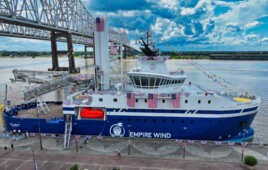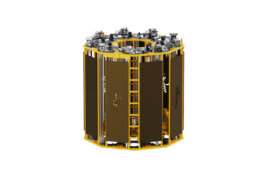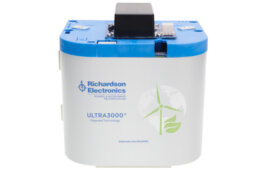Parker Hannifin, a provider of motion and control solutions, will be showcasing its KleenVent Coolant Evaporation Inhibitor solution (KV-CEI) at the upcoming WINDPOWER 2017, in Anaheim, CA May 23 to 25. (Visit Booth #2886)

Parker’s KleenVent Coolant Evaporation Inhibitor (KV-CEI) optimizes wind-turbine operation by eliminating water evaporation in the coolant solution and stopping the ingress of airborne contaminants by closing the cooling loop.
The product is targeted at owners of 1.5-MW wind turbines that use an open-loop, water-glycol based IGBT cooling system. Warm atmospheric temperatures lead to water evaporation from the open-loop coolant mix. The system has to be regularly monitored and serviced for replenishing and rebalancing of fluid, resulting in costly turbine and transformer power down.
In addition, when the system is not promptly serviced, the resulting mix imbalance inhibits the cooling properties of the fluid and can potentially compromise the IGBTs, sometimes requiring their replacement.
Parker’s custom designed KV-CEI after-market solution helps optimize wind-turbine operation and eliminate maintenance downtime previously required to restore cooling fluid mix levels, by closing the loop on the “open loop” cooling system.
KleenVent effectively eliminates water evaporation by containing the water vapor in a closed loop add-on system, and condensing it back into a liquid to maintain a constant water-glycol ratio maintenance to optimize the cooling systems efficiencies.
Cost savings in 1.5-MW turbines with open-loop cooling systems
As owners and operators are spending budgets and time maintaining IGBT coolant levels in open-atmosphere cooling systems, the overall cost of maintenance, replacement fluids, and reduced reliability adds up quickly. The results of implementing the KV-CEI solution are reduced monitoring and improved turbine uptime and reliability – which net higher productivity and uninterrupted power generation and revenue streams.
Return on investment for the KV-CEI can be measured in as little as a few short weeks in warmer climates and at elevated operating temperatures, meaning a quick investment in the Parker KleenVent solution can provide breakeven expenditures by summer’s end, along with continued productivity savings for the life of the turbine.
How it works
KV-CEI is part of a larger family of products designed to isolate hydraulic systems from airborne contaminants, dust, chemicals, and water vapor evaporation. The KV-CEI enclosure solution works by closing off the coolant loop system from the outside atmosphere (where evaporation escapes) with a breather bladder.
This bladder allows the outside air to inflate and deflate the bladder as fluid levels inside the isolation tank expand and contract due to system liquid temperature changes. A low-pressure relief valve helps prevent system over-pressurization in case of unforeseen air trapped inside the fluid lines, and an open-close air exhausting valve allows the system to be drained and refilled quickly with the proper fluid levels during a normal preventative maintenance cycle.
The KV-CEI design is versatile enough to allow the addition of low-level liquid sensors when needed. We also can design many mounting options designed to fit a particular mounting pattern. Currently, the KV-CEI technology is deployed in wind-turbine systems for one of the world’s leading turbine manufacturers.
The new Parker KV-CEI reservoir bladder barrier creates a closed atmosphere that expands and contracts with temperature- and atmospheric pressure-induced changes.
Isolating the internal volume of the reservoir from the existing outside atmosphere prevents both evaporation of water from and the ingress of airborne contaminants into the water-glycol solution. A check valve provides over pressure protection, and a visual level indicator allows local confirmation of the coolant level. An additional port is included to accommodate an optional, industry-standard, liquid-level float switch for remote low-level coolant indication.
Field installation of the KV-CEI averages less than 30 minutes. View the link below to access product brochure and product overview and details here.
Filed Under: Hydraulics, News



